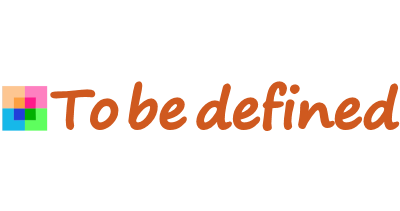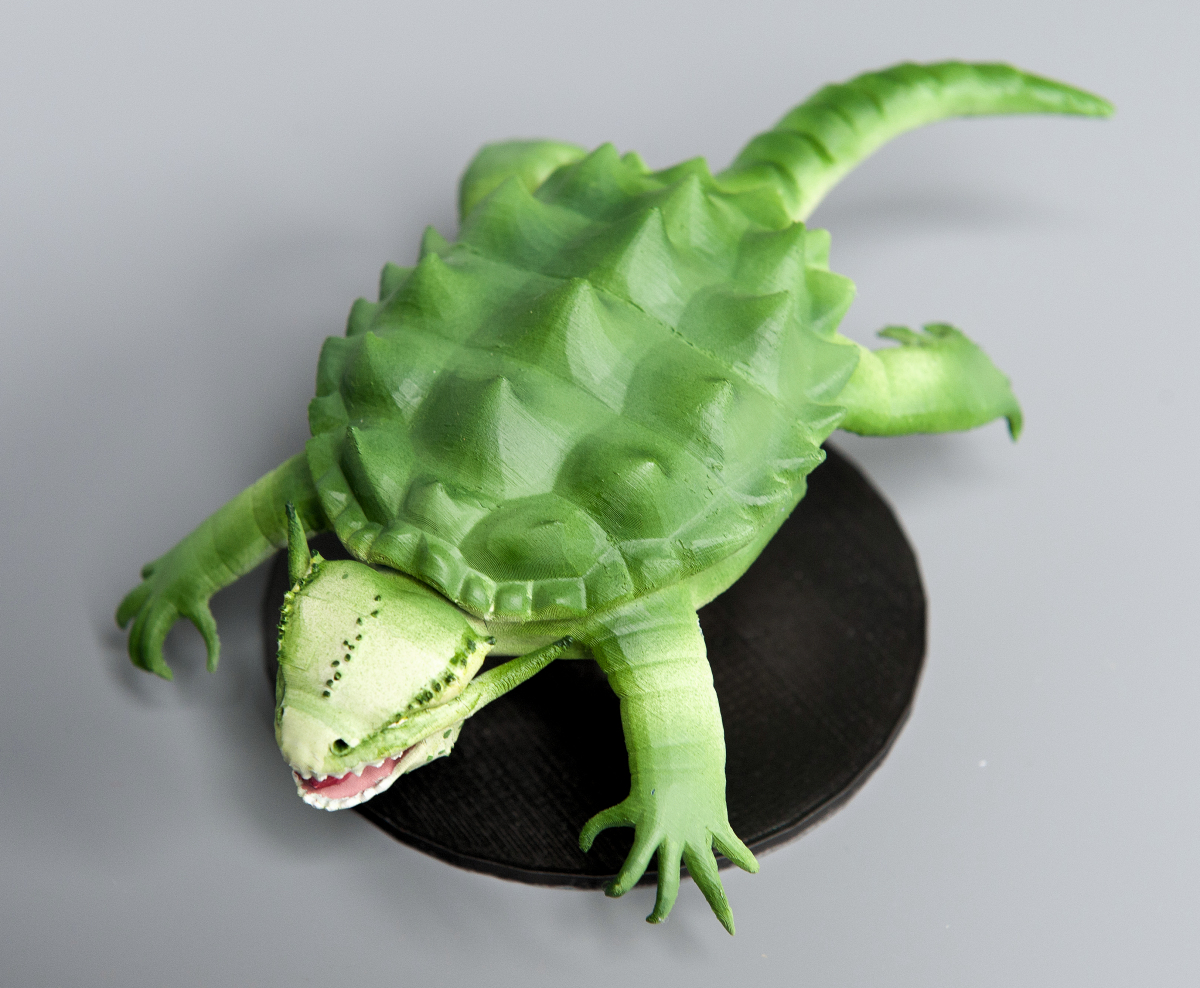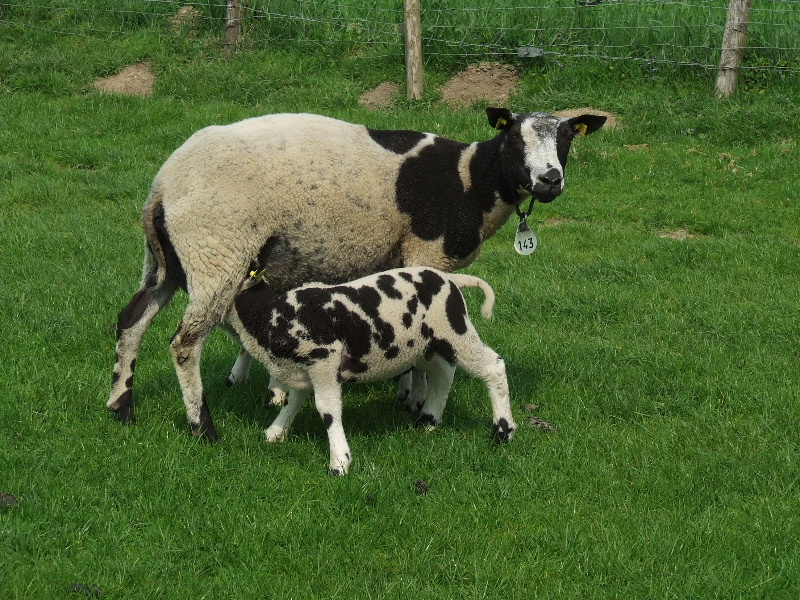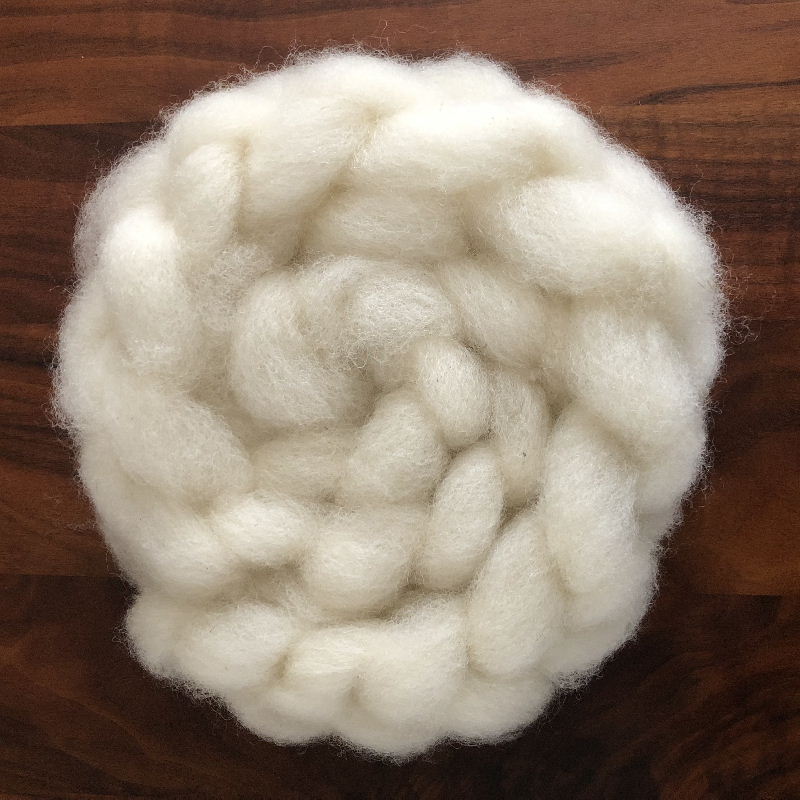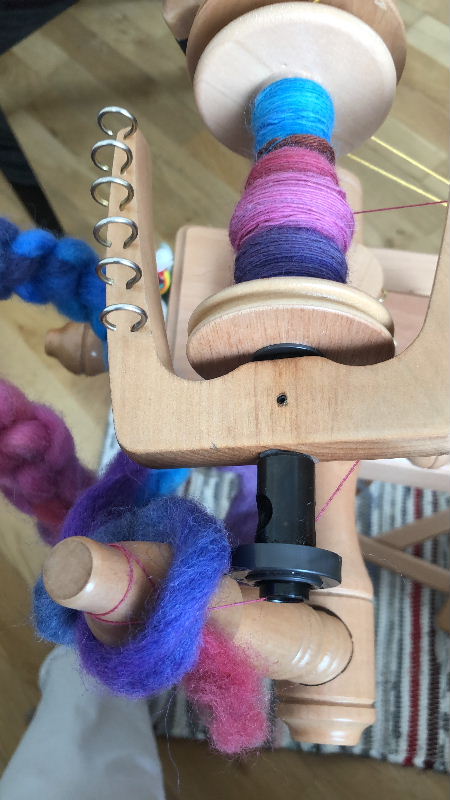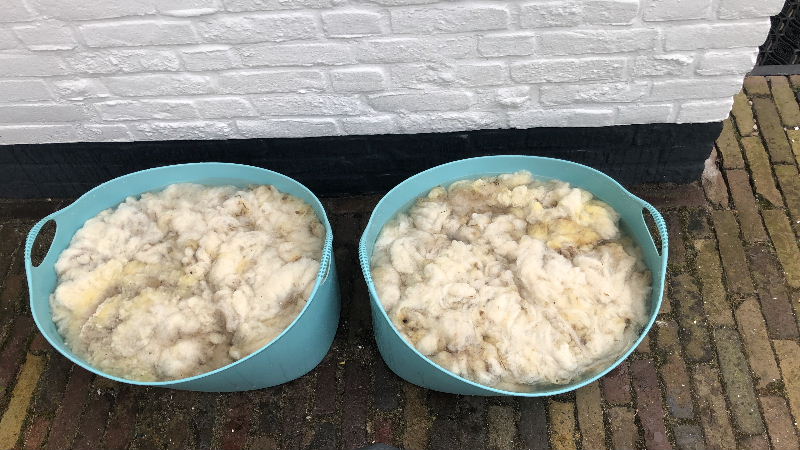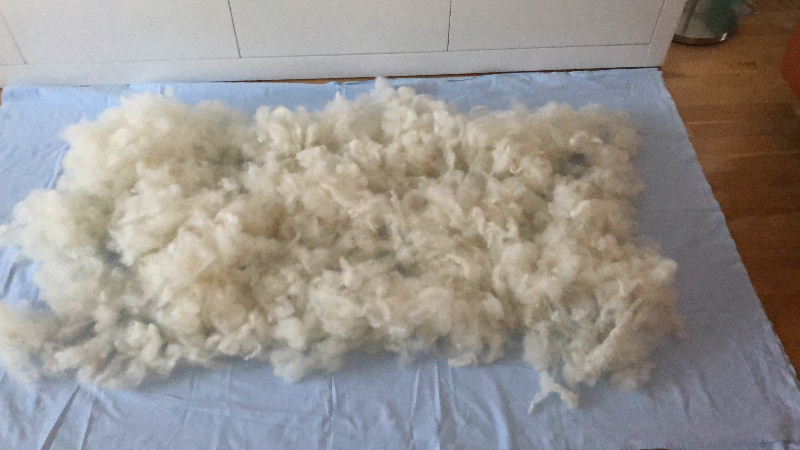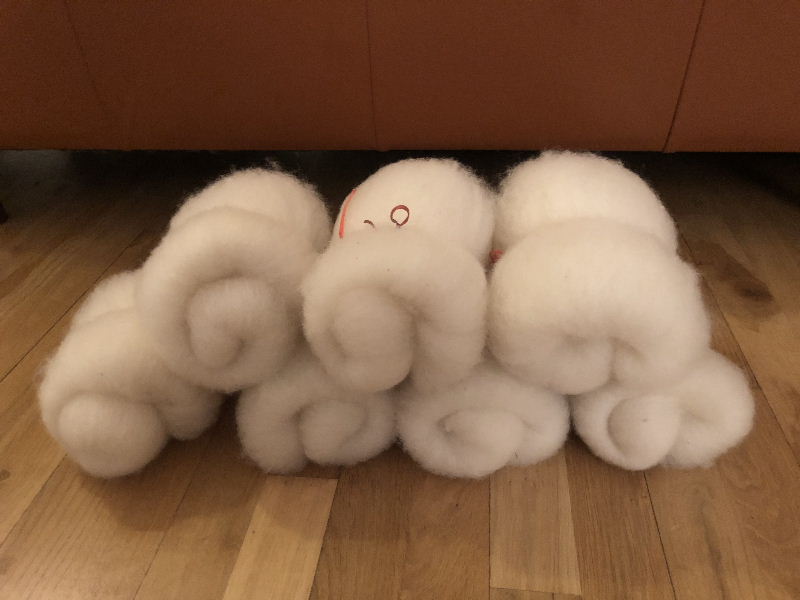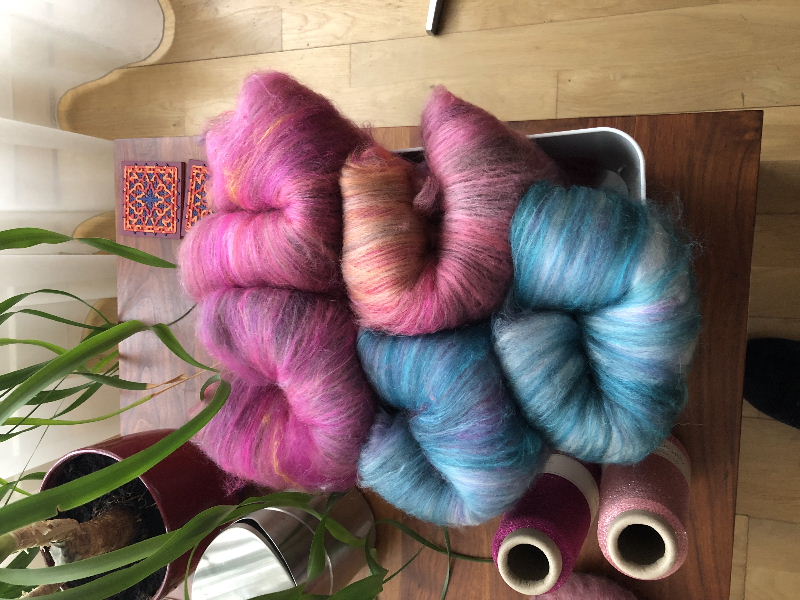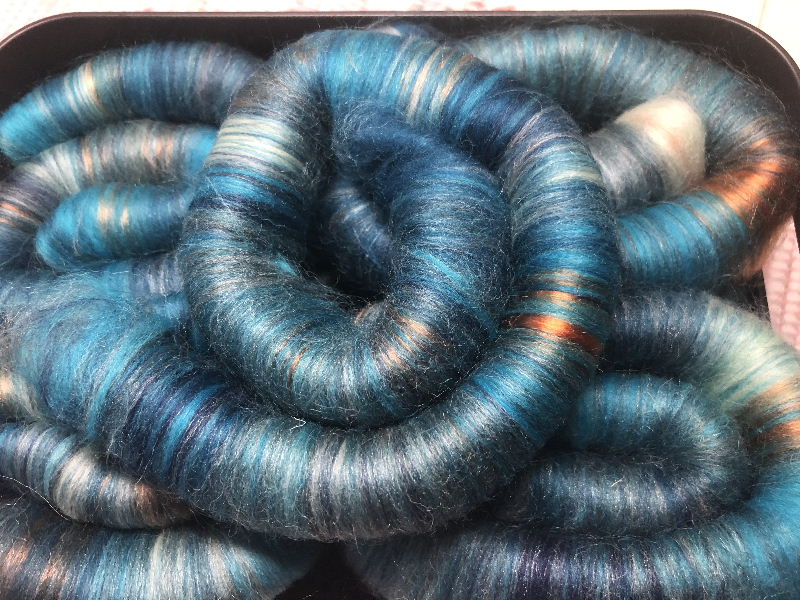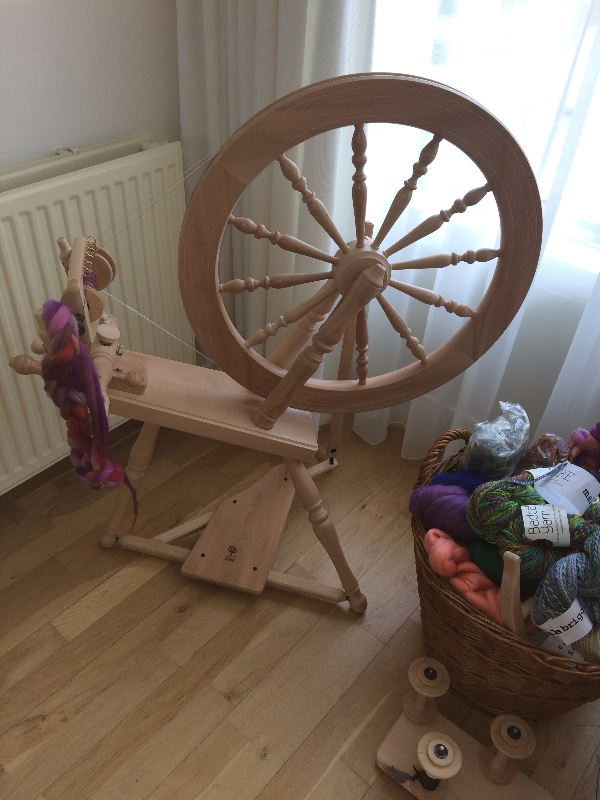| Wool is a natural product, the animals do not have to be killed to obtain the fiber. The fleece of sheep and alpacas, for example, is sheared off and it simply grows back during the year. |
| Although the wool can also be used without washing it first, this is usually not done. The wool is then very greasy and smells quite a bit. The parts with a lot of mud, faeces and grasses are first removed after which the rest is washed with degreasing soap. Care must be taken that there is not too much movement of the coat because otherwise it will matt. |
| After the coat has dried, the wool is carded or combed. When combing the wool, the fibers/hairs are placed parallel. When carding the wool, the fibers/hairs remain more criss-crossed. |
| Now that the wool has been carded or combed, it can be further processed, for example by spinning or felting. On the right you can see carded wool, also called batts. The batts you see here are carded on a drumcarder |
Wool is easy to dye. This can be done before carding or combing, but also afterwards, or even after spinning or felting. In addition to wick and batts, wool intended for spinning is also available in rolags. These are a kind of rolls of wool. With rolags you can spin beautiful thin wool.
|
| In addition to making felt or spinning, wool can also be used as insulation material or filling. In conclusion, wool is an environmentally friendly and versatile product. |
